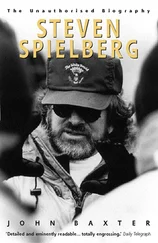Rebay also disbursed monthly grants of $15 a head to Hofmann’s best students, including De Niro and Admiral, for canvas and paints. The sum seems derisory today, but few modern artists in New York then made any money at all. Max Ernst’s son Jim was considered lucky to be earning $25 a week in the Museum of Modern Art’s stock room. Clement Greenberg, the country’s most perceptive critic of emerging art, worked as a postal clerk, and wrote in his spare time. Jackson Pollock dressed department-store windows, silk-screened designs on scarves and umbrellas, and painted dials for aircraft instruments (with Elaine, the wife of Willem de Kooning, working next to him).
In 1942, Rebay offered both Pollock and De Niro full-time work at the Foundation, answering queries from the public. She even paid for the black suits the job required. The men sometimes had to sleep in the poorly-secured building overnight, but both were glad of the $35 a week.
Even aside from their sexual disparity, Robert and Virginia, each at the start of a career, and with little in common socially, politically or intellectually, were hardly credible as husband and wife, and even less likely parents. But towards the end of 1942 Virginia briefly took care of an infant cousin, and the experience, she explained later, stirred a maternal impulse she’d never suspected. Gripped briefly by this urge, she became pregnant, and on 17 August 1943 her first and only child, Robert Jr, was born. To avoid confusion with his father, he soon became ‘Bobby’, and carried that name all his life.
The 14th Street studio was no place to bring up a baby, so the De Niros found another loft at 220 Bleecker Street, in the heart of Greenwich Village, between McDougal Street and 6th Avenue. It occupied the entire top floor and, once a wall was knocked out to create two big studio spaces and a bedroom, made a comfortable, if draughty home. Scavenged radiators softened the chill. Baths were taken in a tin tub in the kitchen.
Young Bobby became used to being picked up, played with, but put down as the novelty palled. Family friends remember a child who was ‘never coddled’. He was already marking out his own territory. There was plenty for him to discover in the cavernous space, and, left to his own devices, he probed every cranny. Curiosity became his strongest motivation. It would make him, in adulthood, supremely inquisitive, ready to spend months probing, observing, imitating.
Bobby never lost his enthusiasm for his parents’ style of life, nor for the district where they raised him. He lives in a loft himself, and in 1997 boasted of his parents’ prescience. ‘They were aware of lofts, of industrial … whatever ya wanna call it; culture, blah blah … way before they became fashionable. SoHo was a lot different [then]. It was just a total industrial area that nobody thought of as a place to live. Warehouses, factories; stuff like that.’
Whatever the material drawbacks, the Village and its environs was the place to live if you were involved in the arts. ‘Except for the museums, theatres and opera,’ wrote the critic Lionel Abel, ‘all that was humanly essential to the city was bounded by Bleecker and 14th Streets, by 2nd Avenue and Greenwich Street. There was no other residential section in New York.’
Bobby absorbed the same belief. Accepting the 1997 Municipal Art Society’s Jacqueline Kennedy Onassis Medal for his efforts to help revive TriBeCa, the downtown Manhattan neighbourhood where he’d opened a pair of restaurants and established a film centre, De Niro told the audience, ‘I just want to thank the Municipal Art Society for holding this downtown, because I really don’t like to go above 14th Street.’
It’s surprising that the marriage of the De Niros lasted as long as it did. On top of his sexual incompatibility with Virginia, Robert could be a trying companion. ‘“Affability” is not a word that applies to Bob,’ said his friend Barbara Guest, ‘nor is “social”.’ Art critic Thomas Hess remembers him as ‘tall, saturnine, given to black trenchcoats, his face sharp as a switchblade, with a temperament to match’. His moods swung between elation and black depression. ‘Since I was a child,’ he confessed later, ‘I have felt in my heart two contradictory feelings, the horror of life and the ecstasy of life.’
Admiral, though equally intense, was more social. Friends, both artistic and political, thronged the apartment day and night, arguing, gossiping, flirting, plotting. She attracted men, in particular writers Manny Farber and Clement Greenberg. The most authoritative voice in American cinema criticism, Farber was always dropping in, since he was writing a screenplay with James Agee, who had a fourth-floor walk-up apartment at 172 Bleecker Street.
In 1942, Peggy Guggenheim included some of Admiral’s work in the Spring Salon for Young Artists at Art of This Century, and Alfred Barr bought one of her canvases, Composition , for the Museum of Modern Art. He only paid $100, but nobody else in her group had sold anything at all. Though Jackson Pollock was widely acknowledged as the brightest of the emerging New York School, it would be 1944 before Barr bought anything by him.
Virginia’s success, coming at a time when Robert had sold nothing himself, strained the marriage still more. He succumbed increasingly to depression. On the wall of his studio, he scribbled two lines from a poem by nineteenth-century poet and photographer Charles Cros, friend of Rimbaud and Verlaine: ‘Je suis un homme mort depuis plusiers années/Mes os sont recouvert par les roses fanées ’ (‘I have been a dead man many years/My bones are clothed in faded roses’).
His resentment grew as it became clear that, despite her sale to MoMA, Virginia didn’t seriously contemplate a career in art. After the birth of Bobby, she concentrated on making a living. Robert had no such concerns. He lived for painting, unworried whether he sold his canvases or not. He wouldn’t achieve any kind of reputation until 1946, when Peggy Guggenheim gave him his first one-man show at Art of This Century, and another didn’t come along until 1950.
As if the social and sexual differences between Robert and Virginia were not enough, they also faced the classic artistic gulf between the figurative and the abstract. ‘For virtually his entire career,’ wrote critic Peter Frank, ‘Robert De Niro Sr painted recognisable images; still life objects, interiors, landscapes, the occasional religious subject, and, above all, figures.’ Composition and the rest of Admiral’s work was entirely abstract, and, given the prevailing movement away from Surrealism, more fashionable.
Being figurative placed De Niro, as one friend remarked, ‘on the wrong side of the commercial divide’. In 1949, Clement Greenberg would list De Niro, Pollock, de Kooning and Robert Motherwell as artists who ‘must still waste valuable energy in the effort to survive as working artists in the face of a public whose indifference consigns them to neglect and poverty’. By then, however, Robert’s finances were of less concern to Virginia, and to Bobby, because the De Niros were no longer living together.
CHAPTER THREE My Father’s Business
They are not girls. They are not boys. They can’t help it. They was born that way. Something in de throat.
Two old ladies commenting on homosexuals in Joel Schumacher’s screenplay for his film Flawless (1999), in which De Niro starred
As tensions increased in their marriage, Robert and Virginia began seeing a Freudian therapist. ‘Many artists who knew Hans Hofmann,’ recalls Barbara Guest, ‘went to a particular shrink whose patients (eventually) had terrible crises and breakdowns. But he couldn’t help them. He was a frustrated man – a failed artist, who meddled.’
Читать дальше












